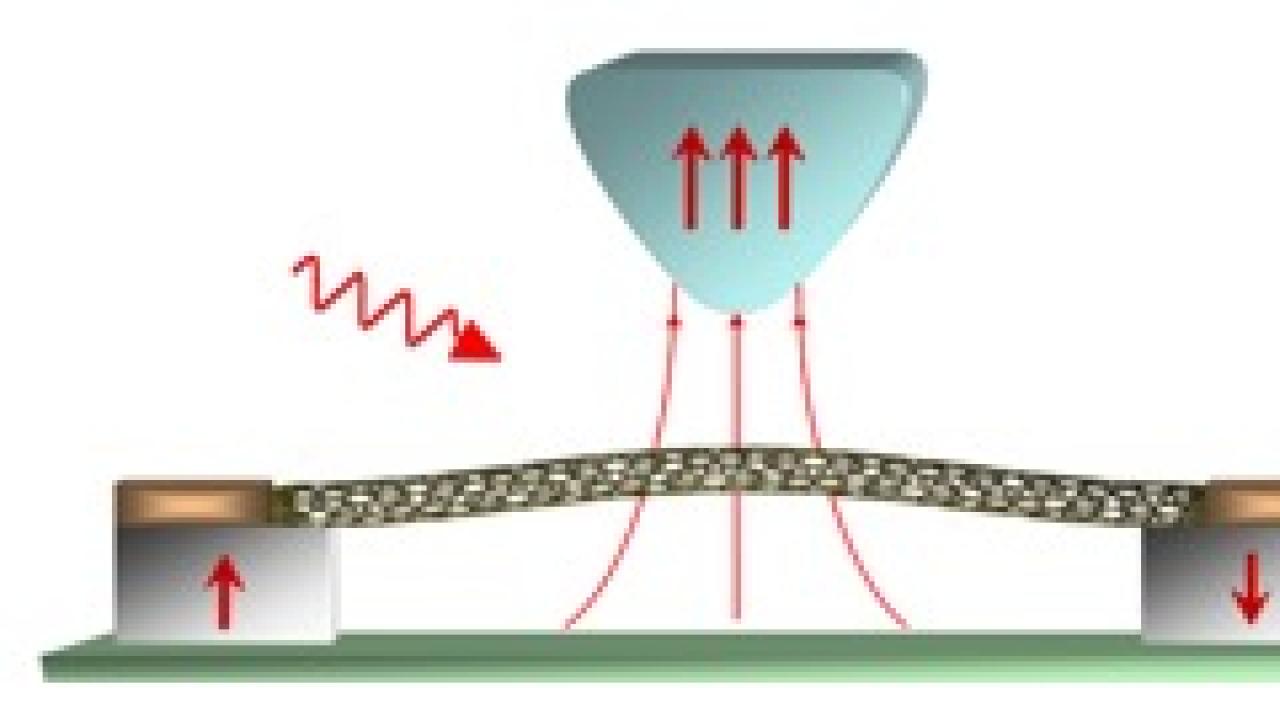
The miniaturization of electronic devices has played an essential role in the information technology industry, as in the case of transistors. As devices become ever smaller—shrinking to the nanoscale—knowledge of the physical processes taking place at that scale is needed. These processes are, in fact, exciting due to quantum mechanics, a promising field of research in condensed matter physics.
Within this field, ICTP scientists in the Centre’s Condensed Matter section perform theoretical research on nanoelectromechanical (NEM) systems--devices in which you can control a single electron current. In these very limited size systems, current can affect, or couple with, oscillations of the mechanical part of device. Recently they, along with an international team of researchers, made a significant advancement in this field, the results of which were published in Physical Review Letters.
The ICTP condensed matter physicists—Anton Parafilo and Mikhail Kiselev—and their colleagues directed their research by posing the following question: how can we manipulate the processes in NEM devices with the help of an external electromagnetic field, for instance microwaves?
Due to the mismatch between their frequencies and mechanical vibrations, microwaves are usually not expected to affect the mechanical operation of a nano-device. With their theoretical demonstration, however, scientists have shown how an external microwave irradiation could induce mechanical vibration in NEM devices and how to manipulate them.
To study these nano-effects, the scientists considered a model of a device composed by a suspended carbon nanotube, which is resistantly connect to two ferromagnetic electrodes with opposite magnetization directions. They placed a magnetic tip close to this “carbon bridge”, generating a magnetic field that makes the carbon wire vibrate.
“Usually, interaction between electrons and mechanical oscillations in NEM devices is due to electrostatic force, that acts on charged particles in an electrical field,” says Parafilo, leading author of the paper. “If you injected electrons into the nanotube of a nano-device, the total charge of the molecule changes. Thus, an external voltage can produce an external force that shifts the nanotube,” explains the researcher. “However, there is another specific quantity of elementary particles that also can significantly contribute to the mechanics of nano-devices, and it is called electron spin. What we demonstrated is that electron spin provides a way for coupling both microwave radiation and mechanical oscillations, allowing it to act as a link between the two.”
More specifically, the interaction of the electron spin on a nanotube, in combination with the magnetic field produced by the tips, are able to generate a magnetic force acting on the nanotube itself. “The nature of this interaction is similar to the interaction between two magnets, where opposite poles are attracted to each other and the same poles are repulsed.” A second important aspect is that the electromagnetic field is also connected to the electron spin of the nanotube, and can result in a switching of the magnetic force direction. The probability of this process, Parafilo explains, depends on both the frequencies of the electromagnetic field and the magnetic field produced by the tip. The two processes can interplay, leading to instability in the mechanical subsystem, which is the evidence of a photomechanical coupling.
The described behaviours allow researchers to control electronic transport and mechanical vibrations in NEM transistors, with the help of an electromagnetic field, and at the same time allows the transfer of electromagnetic field energy into energy of mechanical oscillations. The study’s findings increase knowledge of processes taking place at small scales, with potential applications for the future electronic devices.
The study, titled “Spin-mediated Photomechanical Coupling of a Nanoelectromechanical Shuttle”, is available on the Physical Review Letters website (http://journals.aps.org/prl/abstract/10.1103/PhysRevLett.117.057202).
--Alessandro Vitale
















